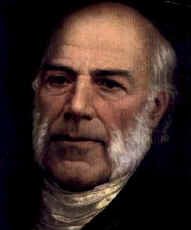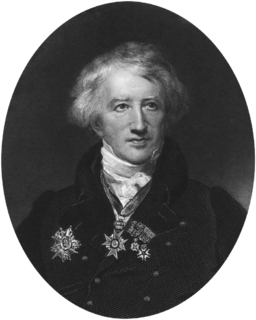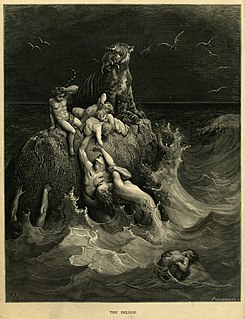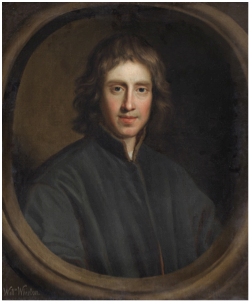 W
WJean Louis Rodolphe Agassiz was a Swiss-born American biologist and geologist recognized as an innovative and prodigious scholar of Earth's natural history. Agassiz grew up in Switzerland. He received doctor of philosophy and medical degrees at Erlangen and Munich, respectively. After studying with Cuvier and Humboldt in Paris, Agassiz was appointed professor of natural history at the University of Neuchâtel. He emigrated to the United States in 1847 after visiting Harvard University. He went on to become professor of zoology and geology at Harvard, to head its Lawrence Scientific School, and to found its Museum of Comparative Zoology.
 W
WJoachim Barrande was a French geologist and palaeontologist.
 W
WJ Harlen Bretz was an American geologist, best known for his research that led to the acceptance of the Missoula Floods and for his work on caves.
 W
WWilliam Buckland DD, FRS was an English theologian who became Dean of Westminster. He was also a geologist and palaeontologist.
 W
WJean Léopold Nicolas Frédéric, Baron Cuvier, known as Georges Cuvier, was a French naturalist and zoologist, sometimes referred to as the "founding father of paleontology". Cuvier was a major figure in natural sciences research in the early 19th century and was instrumental in establishing the fields of comparative anatomy and paleontology through his work in comparing living animals with fossils.
 W
WAlfred de Grazia, born in Chicago, Illinois, was a political scientist and author. He developed techniques of computer-based social network analysis in the 1950s, developed new ideas about personal digital archives in the 1970s, and defended the catastrophism thesis of Immanuel Velikovsky.
 W
WCharles Leroy Ellenberger is perhaps best known as a one-time advocate, but now a critic of, controversial writer Immanuel Velikovsky and his works on catastrophism. He first read Worlds in Collision in 1969. In 1979, he became a contributing editor to the Velikovsky-inspired Kronos journal, and has contributed material to many other publications. In 1980 he was selected by the editor of Astronomy magazine to debate James Oberg on Velikovsky. His confidence in the validity of Velikovsky's ideas was shaken in January 1982 when Kronos sponsored his attendance at the semi-annual AAAS meeting in Washington, D.C., in order to distribute information on Velikovsky. In a wide-ranging conversation with Jeremy Cherfas, then a writer for the British weekly science magazine New Scientist over how the press misunderstood Velikovsky, Cherfas had counter-arguments to many points that Ellenberger was not able to rebut. According to Professor of Social Theory Alfred de Grazia at New York University, "By 1983 Ellenberger was preparing to abandon much of quantavolution and found now that the story of Velikovsky was not without its shady tones, and more important, that Arctic ice cores and bristlecone pine dating technologies were directly contradicting Holocene quantavolutions. . . ; further, that Gentry's studies of the surprising 'instant' polonium halos of creation. .. were probably invalid." Henry Bauer described Ellenberger's role in the Velikovsky scene as follows: ".. . was a confidant to Velikovsky, a frequent visitor from April 1978 to his death in November 1979, and a Senior Editor of the Velikovskian journal Kronos, until the evidence forced him to conclude that Velikovsky's scientific claims were baseless. Velikovsky inscribed his copy of Ramses II and His Time 'To Leroy who is consumed by the sacred flame of search for truth', 20 May 1978, and gave him permission to sell 'Velikovsky's right!' T-shirts. Alfred de Grazia, impetus for The Velikovsky Affair (1966), appointed him chronicler of the continuing Velikovsky controversy in 1980. Ellenberger's last contact with Velikovsky was a phone call from him two days before he died." Also, he "has tried unceasingly but to little avail to have his former colleagues acknowledge the accumulating evidence, for example, from Greenland ice cores, that Velikovsky's claimed catastrophes did not in fact occur. Ellenberger points out, too, that Velikovsky's writings have become superfluous: astronomically plausible argument and speculation about relatively recent cosmic catastrophism can now be found in the work of Victor Clube and Bill Napier, where the testimony of myth and historical records is also taken into account."
 W
WFingerprints of the Gods: The Evidence of Earth's Lost Civilization is a 1995 pseudoarcheology book by Graham Hancock, in which the author echoes 19th-century writer Ignatius Donnelly, author of Atlantis: The Antediluvian World (1882), in contending that an enigmatic, ancient, advanced civilization existed in prehistory, one which served as the common progenitor civilisation to all subsequent known ancient historical ones. The author proposes that sometime around the end of the last Ice Age this civilisation ended in cataclysm, but passed on to its inheritors profound knowledge of such things as astronomy, architecture and mathematics.
 W
WA flood myth or deluge myth is a myth in which a great flood, usually sent by a deity or deities, destroys civilization, often in an act of divine retribution. Parallels are often drawn between the flood waters of these myths and the primaeval waters which appear in certain creation myths, as the flood waters are described as a measure for the cleansing of humanity, in preparation for rebirth. Most flood myths also contain a culture hero, who "represents the human craving for life".
 W
WDieudonné Sylvain Guy Tancrède de Gratet de Dolomieu usually known as Déodat de Dolomieu was a French geologist. The mineral and the rock dolomite and the largest summital crater on the Piton de la Fournaise volcano were named after him.
 W
WEdward Hitchcock was an American geologist and the third President of Amherst College (1845–1854).
 W
WJames Patrick Hogan was a British science fiction author.
 W
WJohannes "Hanns" Evangelist Hörbiger, better known as Hanns Hörbiger, was an Austrian engineer from Vienna with roots in Tyrol. He took part in the construction of the Budapest subway and in 1894 invented a new type of valve essential for compressors still in widespread use today.
 W
WSir Henry Hoyle Howorth was a British Conservative politician, barrister and amateur historian and geologist.
 W
WIsaac Newton Vail was an American Quaker, schoolteacher, and pseudoscientist supporting the theory of catastrophism. His ideas were taken up by creationists including Jehovah's Witnesses.
 W
WWilliam Thomson, 1st Baron Kelvin, was a British mathematical physicist and engineer born in Belfast. Professor of Natural Philosophy at the University of Glasgow for 53 years, he did important work in the mathematical analysis of electricity and formulation of the first and second laws of thermodynamics, and did much to unify the emerging discipline of physics in its modern form. He received the Royal Society's Copley Medal in 1883, was its President 1890–1895, and in 1892 was the first British scientist to be elevated to the House of Lords.
 W
WGeorgina King (1845-1932), was an Australian geologist and anthropologist.
 W
WPatrick Matthew was a Scottish grain merchant, fruit farmer, forester, and landowner, who contributed to the understanding of horticulture, silviculture, and agriculture in general, with a focus on maintaining the British navy and feeding new colonies. He published the basic concept of natural selection as a mechanism in evolutionary adaptation and speciation in 1831, but did not further develop or publicize his ideas. Consequently, when Charles Darwin later published On the Origin of Species in 1859, he and Alfred Russel Wallace were regarded by their scientific peers as having originated the theory of evolution by natural selection; it has been suggested that Darwin and/or Wallace had encountered Matthew's earlier work, but there is no hard evidence of this. After the publication of On the Origin of Species, Matthew contacted Darwin, who in subsequent editions of the book acknowledged that the principle of natural selection had been anticipated by Matthew's brief statement, mostly contained in the appendices and addendum of his 1831 book, On Naval Timber and Arboriculture.
 W
WA New Theory of the Earth was a book written by William Whiston, in which he presented a description of the divine creation of the Earth and a posited global flood. He also postulated that the earth originated from the atmosphere of a comet and that all major changes in earth's history could be attributed to the action of comets. It was published in 1696 and was well received by intellectuals of the day such as Isaac Newton and John Locke.
 W
WThe Oera Linda Book is a manuscript written in a form of Old Frisian, purporting to cover historical, mythological, and religious themes of remote antiquity, from 2194 BCE to 803 CE. Among academics in Germanic philology, the document is widely considered to be a hoax or forgery.
 W
WAlcide Charles Victor Marie Dessalines d'Orbigny was a French naturalist who made major contributions in many areas, including zoology, palaeontology, geology, archaeology and anthropology.
 W
WJames Parkinson FGS was an English surgeon, apothecary, geologist, palaeontologist and political activist. He is best known for his 1817 work An Essay on the Shaking Palsy, in which he was the first to describe "paralysis agitans", a condition that would later be renamed Parkinson's disease by Jean-Martin Charcot.
 W
WGeorge McCready Price was a Canadian creationist. He produced several anti-evolution and creationist works, particularly on the subject of flood geology. His views did not become common among creationists until after his death, particularly with the modern creation science movement starting in the 1960s.
 W
WCount Grigory Kirillovich Razumovsky was a Russian nobleman, political philosopher, botanist, zoologist and geologist.
 W
WOtto Heinrich Schindewolf was a German paleontologist who studied the evolution of corals and cephalopods.
 W
WAdam Sedgwick was a British geologist and priest, one of the founders of modern geology. He proposed the Cambrian and Devonian period of the geological timescale. Based on work which he did on Welsh rock strata, he proposed the Cambrian period in 1835, in a joint publication in which Roderick Murchison also proposed the Silurian period. Later in 1840, to resolve what later became known as the Great Devonian Controversy about rocks near the boundary between the Silurian and Carboniferous periods, he and Murchison proposed the Devonian period.
 W
WImmanuel Velikovsky was a Russian, Israeli, and American scholar. He is the author of several books offering novel interpretations of ancient history, including the U.S. bestseller Worlds in Collision published in 1950. Earlier, he had played a role in the founding of the Hebrew University of Jerusalem in Israel, and was a psychiatrist and psychoanalyst. Velikovsky's work is frequently cited as a canonical example of pseudoscience and has been used as an example of the demarcation problem.
 W
WWilliam Whiston was an English theologian, historian, and mathematician, a leading figure in the popularisation of the ideas of Isaac Newton. He is now probably best known for helping to instigate the Longitude Act in 1714 and his important translations of the Antiquities of the Jews and other works by Josephus. He was a prominent exponent of Arianism and wrote A New Theory of the Earth.
 W
WWorlds in Collision is a book by Russian-American independent scholar Immanuel Velikovsky published in 1950. The book postulates that around the 15th century BC, the planet Venus was ejected from Jupiter as a comet or comet-like object and passed near Earth. The object allegedly changed Earth's orbit and axis, causing innumerable catastrophes that are mentioned in early mythologies and religions from around the world. The book has been heavily criticized as a work of pseudoscience and catastrophism, and many of its claims are completely rejected by the established scientific community as they are not supported by any available evidence.